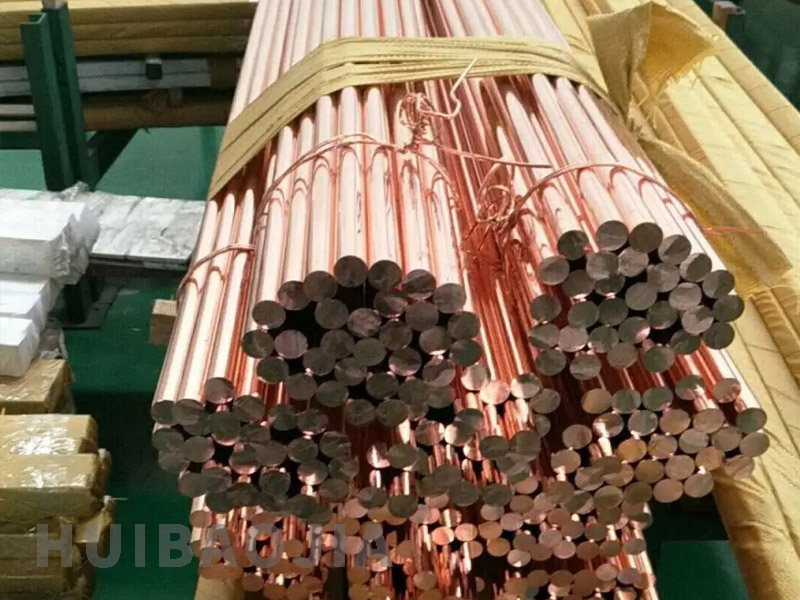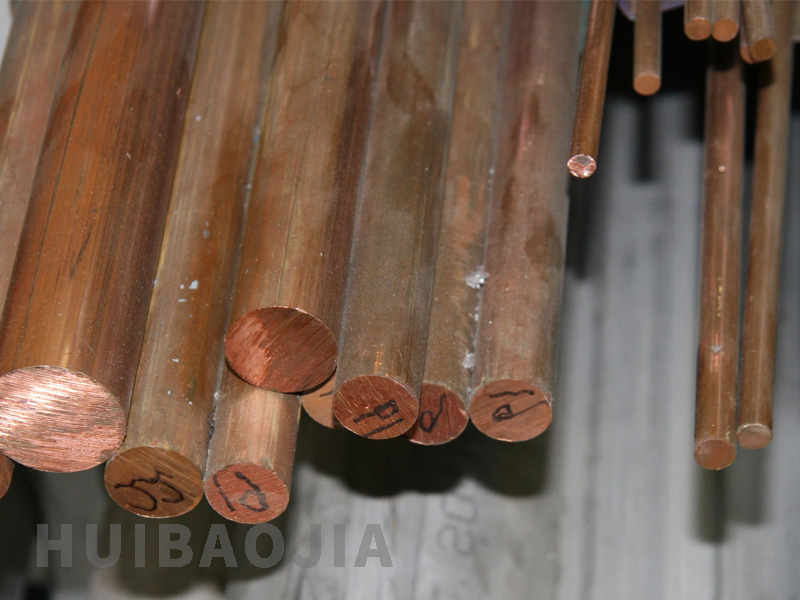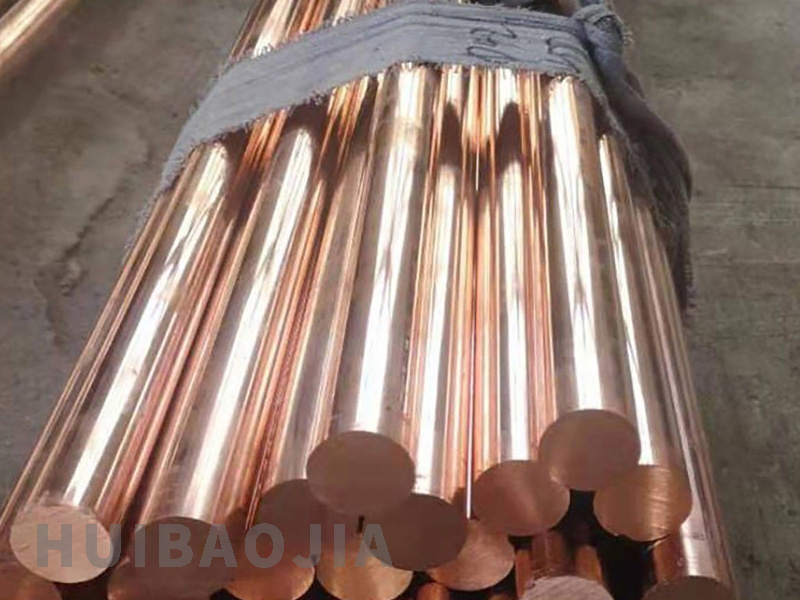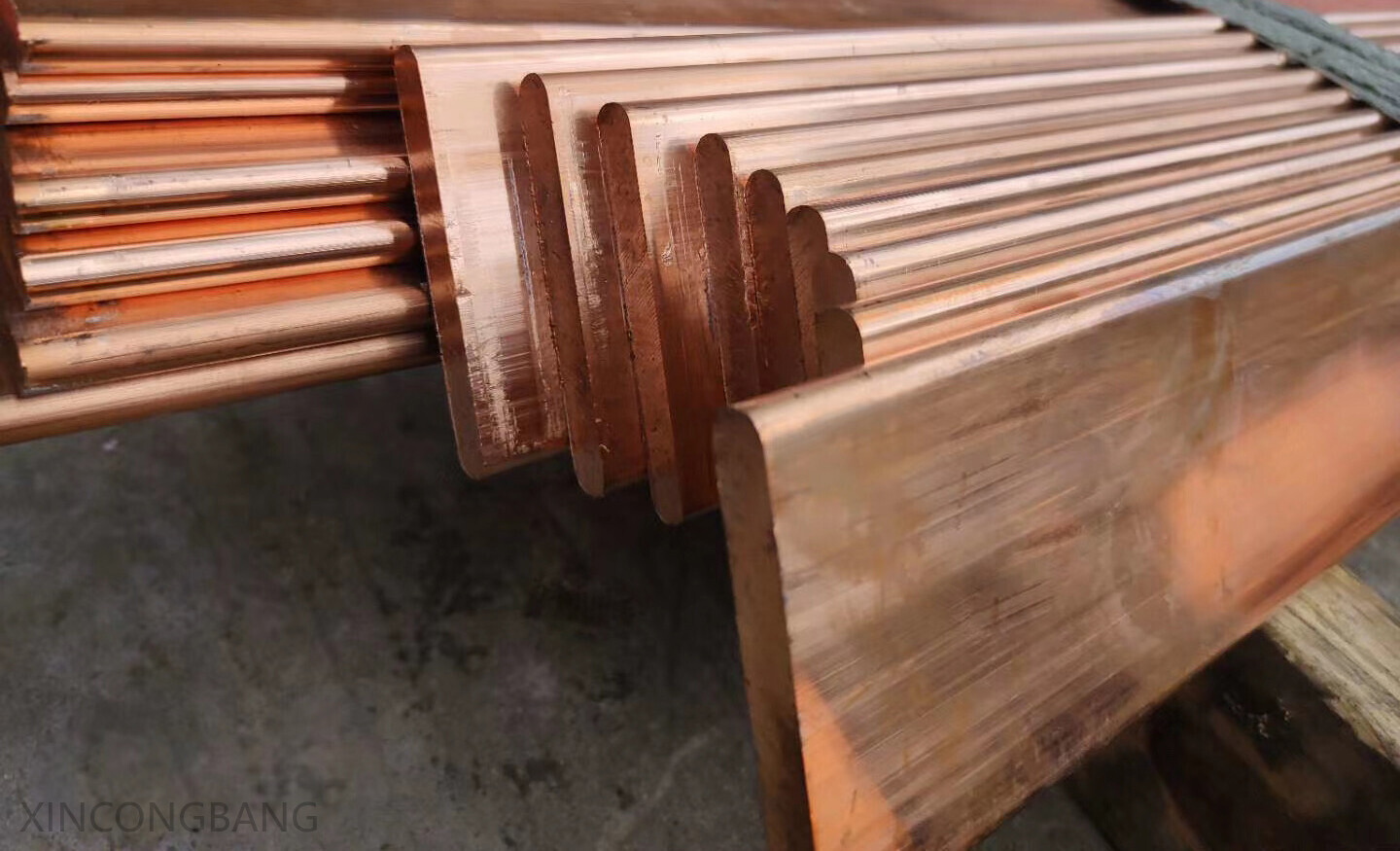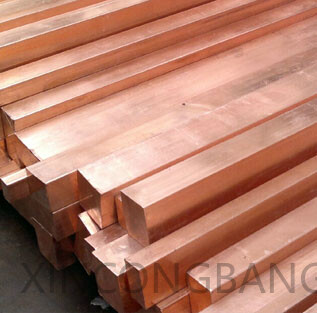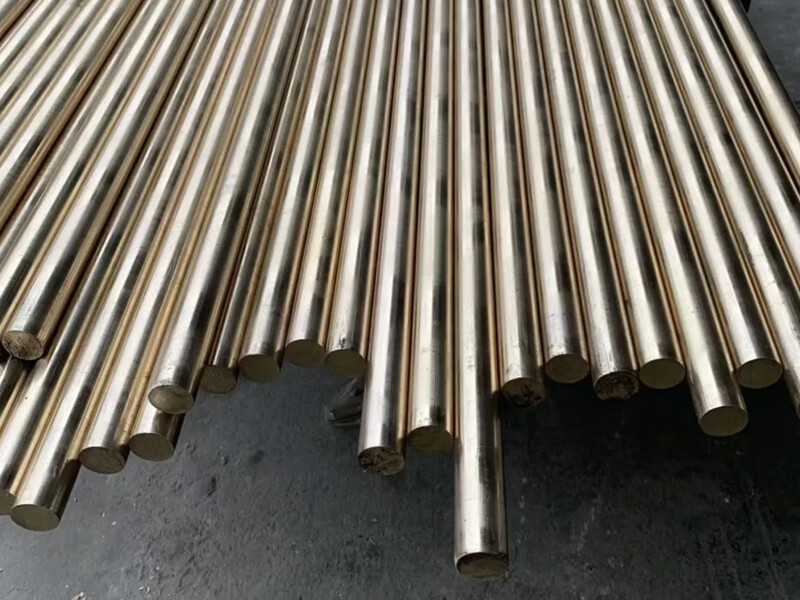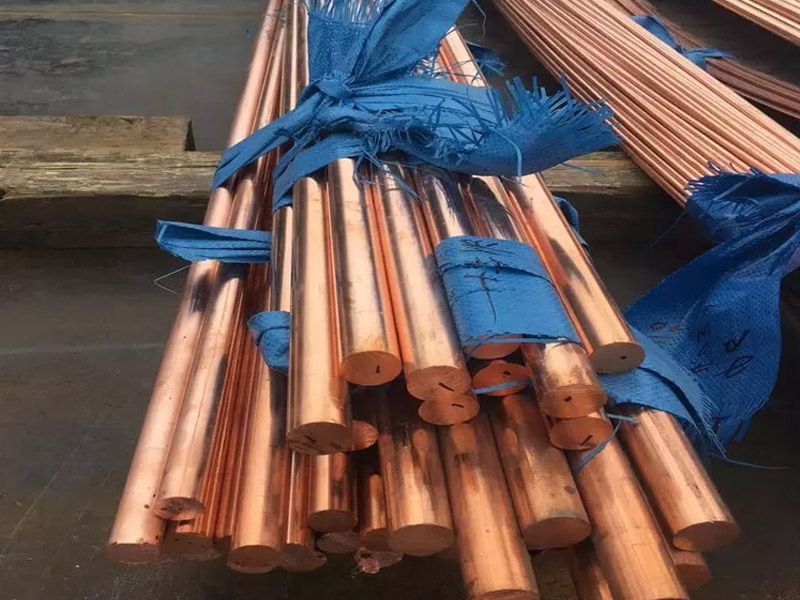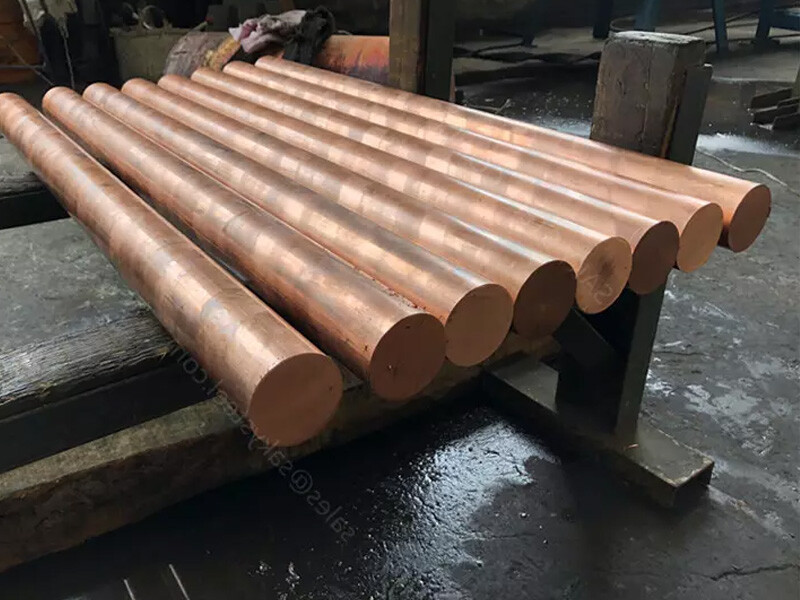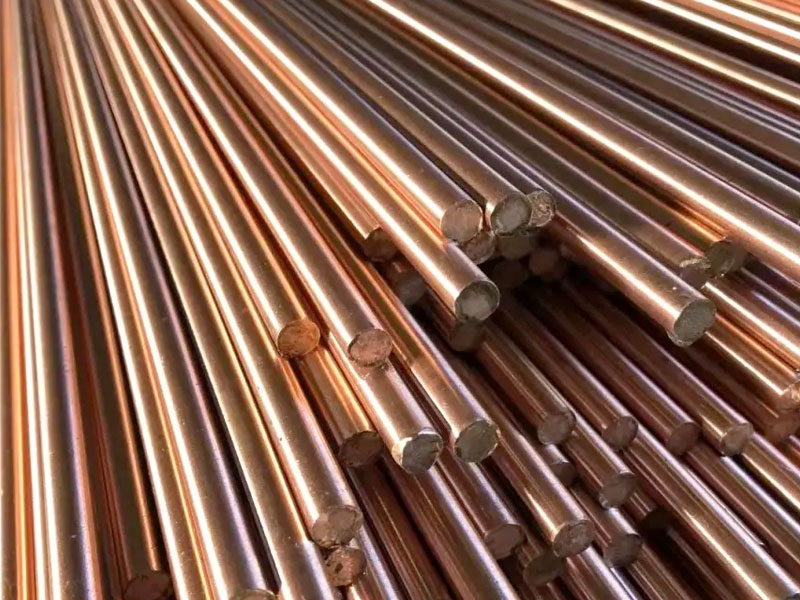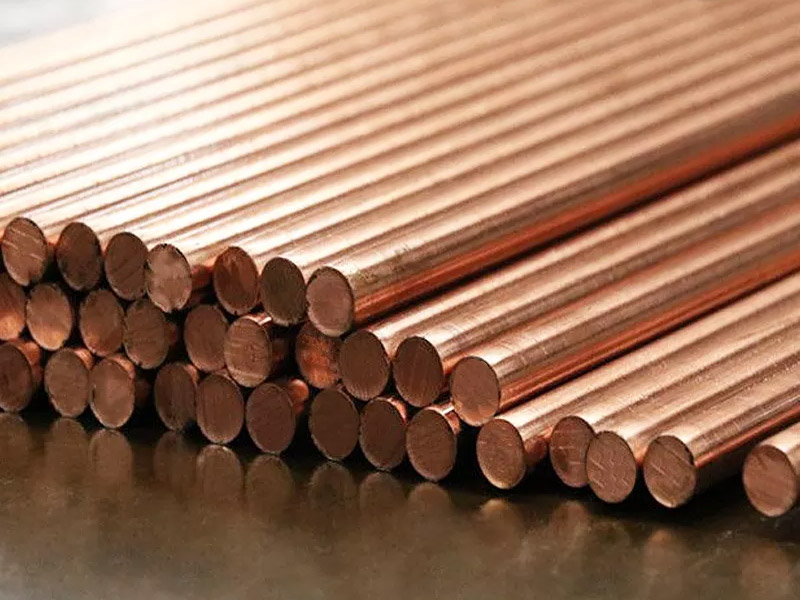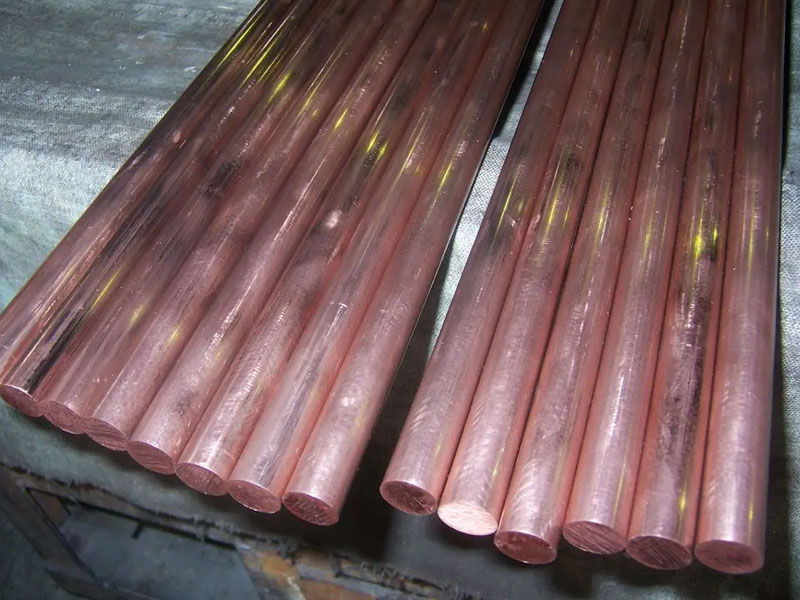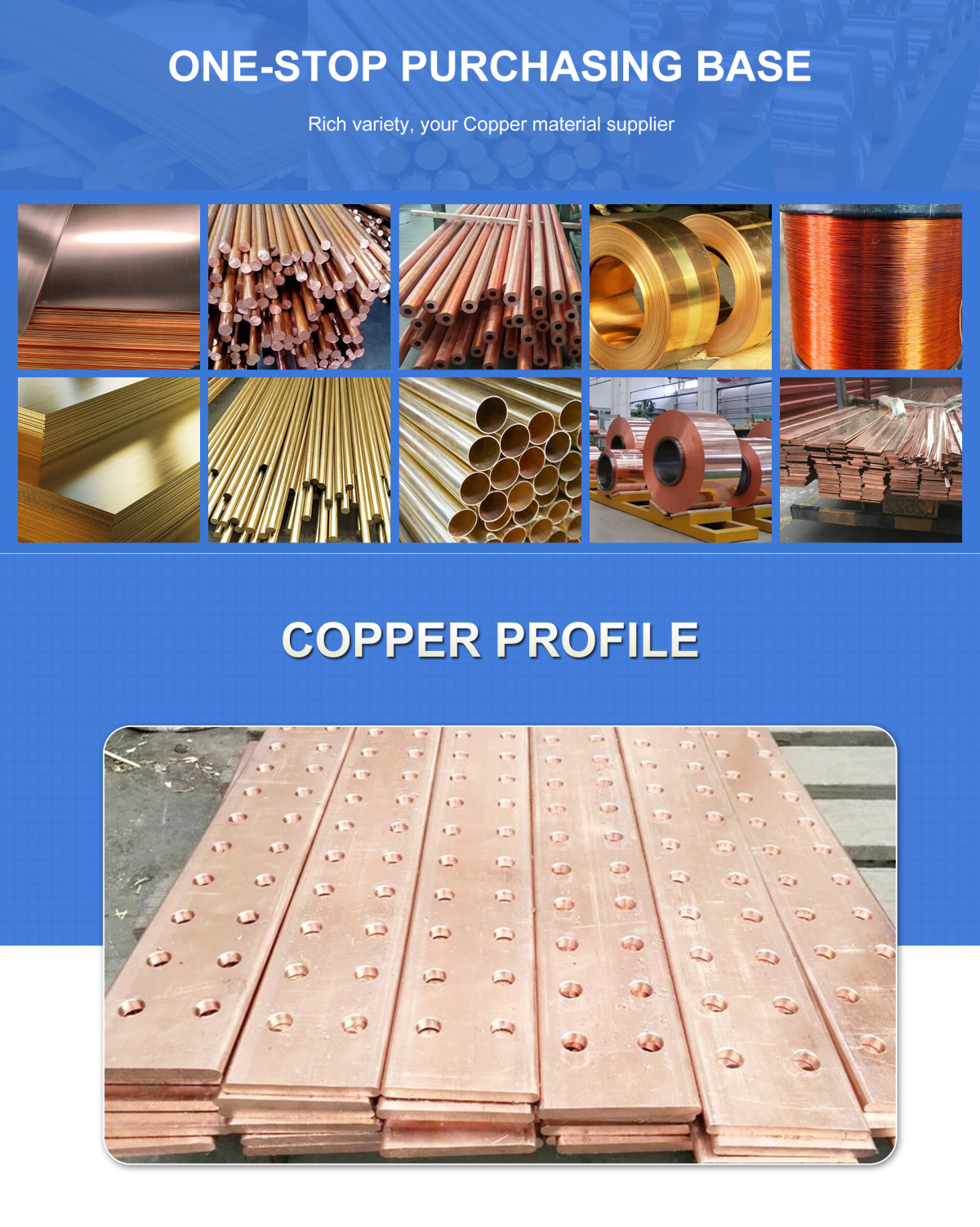
Size range and standards for C11000 electrolytic copper rods:
Size range
Diameter range:
Round rods: Wide range of diameters from 3mm to 800mm according to ASTM B187. Common standard stock sizes include 4mm, 5mm, 6mm up to 250mm (such as listed 4mm, 50mm, 60mm, 100mm, etc.). Other sources show that custom products can cover 3-200mm.
Square rods: Square rods under ASTM B187 have sizes of 4×4mm to 100×100mm.
Rectangular rods: Sizes range from 33×30mm to 295×1066mm, and there is also evidence of flat rods with thicknesses of 0.25 inches (6.35mm) to 1.25 inches (31.75mm) and widths of 0.75 inches (19.05mm) to 4 inches (101.6mm).
Length:
Standard length is 2000-6000mm (about 6.56-19.69 feet), and can be customized. Other information shows that the length can be 1-12 feet (about 0.3-3.66 meters) or customized 5.8 meters, 6 meters, etc.
Shape:
Including round bars, square bars, rectangular bars, hexagonal bars, flat bars, etc., supporting customized shapes.
International Standards
C11000 electrolytic copper rods comply with a number of international standards, including:
ASTM Standards:
ASTM B187: Covers the dimensions and performance requirements of copper rods and bars for electrical (busbar) applications.
ASTM B124: Applies to forged copper rods, bars and profiles.
ASTM B152: Specification for copper sheets, strips, bars and rolled bars.
ASTM B49: Highly conductive copper rods for electrical applications, with a diameter range of 6.4-35mm (1/4-1 3/8 inches).
European Standards (EN):
EN 13601: Specifies the composition, electrical properties and dimensional tolerances of copper rods for general electrical applications, covering round rods with diameters of 2-160mm, square rods/hexagonal rods with widths of 2-160mm, and rectangular rods with thicknesses of 2-40mm and widths of 3-200mm.
Other standards:
SAE CA110, UNS C11000, BS C101, AFNOR Cu-a1 and other corresponding material specifications.
JIS C1100, DIN EN 13601
C11000 is a high-purity electrolytic copper (ETP copper), the main components and impurity upper limits are as follows:
Copper + Silver (Cu + Ag): ≥99.90%
Impurity elements (unit: %, maximum value):
Tin (Sn) ≤0.002
Zinc (Zn) ≤0.005
Lead (Pb) ≤0.005
Nickel (Ni) ≤0.005
Iron (Fe) ≤0.005
Antimony (Sb) ≤0.002
Sulfur (S) ≤0.005
Arsenic (As) ≤0.002
Bismuth (Bi) ≤0.001
Oxygen (O) ≤0.06
Total of other impurities ≤0.1
The mechanical properties of C11000 vary greatly due to processing conditions (such as annealing and cold hardening). The comprehensive data are as follows:
1. Tensile Strength
Annealed state: 200-275 MPa
Cold hardening state: 275-410 MPa

Extreme cold working (such as hard state): up to 500 MPa (converted to ksi about 50)
2. Yield Strength
Annealed state: 50-100 MPa
Cold work hardening state: 100-390 MPa
3. Elongation
Annealed state: δ10≥5%, δ5≥10%; some data are 20-50%
Cold work hardening state: elongation is significantly reduced, such as hard state (H04) is only 2-5%
4. Hardness
Vickers hardness (HV): 40-110 HV (annealing to cold work hardening)
Rockwell hardness (HRF): 65-80 HRF (hard state)
5. Other properties
Elastic modulus: 115-117 GPa
Shear strength: 150-230 MPa
Fatigue strength: excellent
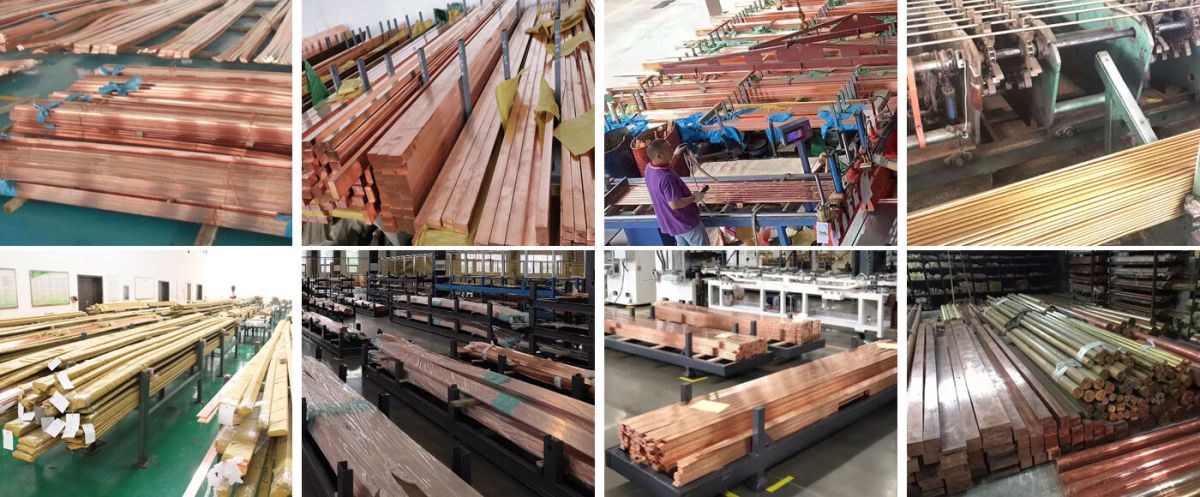
1. Production process
Raw material preparation
The main raw materials include high-purity electrolytic copper (purity ≥ 99.90%), zinc ingots, scrap copper (such as brass scraps, copper), etc. Some processes will add slag removers (such as slag removers) to remove impurities.
The raw materials are matched in proportion, for example, copper, zinc ingots, and copper bran are put into the furnace in order.
Melting and forming
Melting: Use a medium frequency electric furnace or an industrial frequency furnace to heat to about 1100℃ to melt the raw materials into a liquid metal solution. The melting process produces smoke and slag, which need to be treated by environmental protection measures such as bag dust removal.
Continuous casting and extrusion: After the molten copper liquid is kept warm, it is pulled into shape by a continuous casting machine, or a hot extrusion process is used (such as the production of continuous casting rods and extruded rods).
Cold processing: including drawing, straightening, cutting and other steps to refine the surface finish and adjust the size.
Post-processing
Annealing: Some processes require annealing (400~700℃) to restore the plasticity of the material.
Surface treatment: chemical passivation, electroplating or coating processes are used to enhance corrosion resistance.
Quality control
Through precision casting, drawing, straightening and other processes, the internal structure of the copper rod is fine, oxygen-free and highly conductive, and the oxygen content is strictly controlled at ≤0.04%.
2. Product Advantages
Excellent physical properties
Electrical conductivity: electrical conductivity ≥100% IACS (International Annealed Copper Standard), resistivity is only 0.0172 Ω·m, it is an ideal material for power transmission and electronic devices.
Thermal conductivity: thermal conductivity reaches 385~401 W/(m·K), suitable for heat exchangers, radiators and other scenes that require rapid heat transfer.
Excellent mechanical properties
Strength and ductility: tensile strength 200~360 MPa, elongation up to 55%, both high strength and good plasticity, suitable for cold/hot processing (such as stamping, drawing).
Corrosion resistance: strong corrosion resistance in atmospheric and freshwater environments, but surface protection is required in sulfur or halogen environments.
Processing and environmental advantages
Easy to process: can be cut, welded, polished, plastic recovery is fast after annealing, and supports complex molding processes.
Recyclability: production waste (such as scraps) can be recycled, in line with the requirements of the circular economy.
Lead-free and environmentally friendly: Some processes achieve lead-free production and meet environmental standards by improving deoxidation technology.
Widely used
Electrical and electronic: used for wires, cables, busbars, conductive layers of circuit boards, etc.
Thermal management: condensers, radiators, air conditioning copper pipes, etc.
Construction and industry: roof waterproofing boards, valves, pipes, mechanical parts.
Q1:Do you provide samples? Is it free or extra?
A1:Yes, we can provide samples free of charge and the customer will pay the freight.
Q2:What if I don't have export experience ?
A2:We have reliable forwarder agent which can ship items to you by sea/air/Express to your doorstep. Any way, we will help you choose the most suitable shipping service.
Q3:How long is your lead time?
A3:If it is in stock, it is usually 5-10 days. Or, if there is no inventory, 15 days, depending on the quantity.
Q4:What are your terms of payment?
A4:30% T/T deposit in advance, 70% T/T balance within 5 days after B/L copy, 100%.Irrevocable L/C at sight, 100% Irrevocable L/C after receive B/L 30-120 days, O/A.
Q5:How is your technical support?
A5:We provide lifetime online support through Whatsapp/ Skype/ Wechat/ Email. Any problem after delivery, we will offer you call anytime.
Welcome To Your Inquiry
What can we help you?
RELATED PRODUCTS

